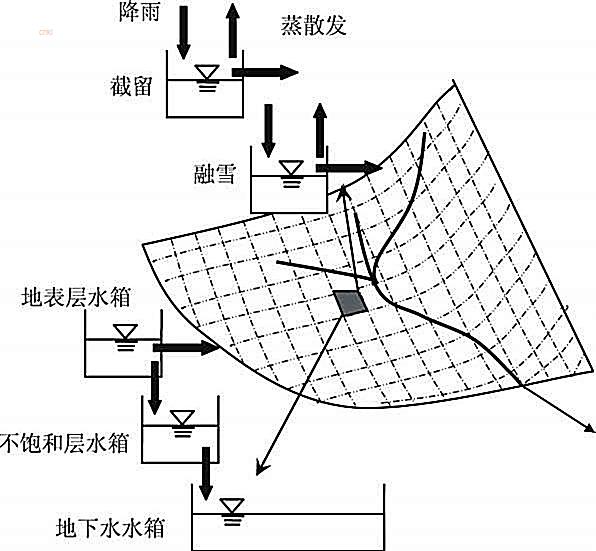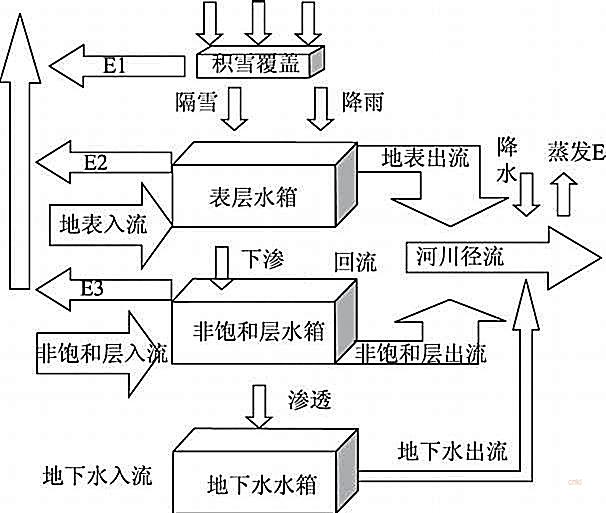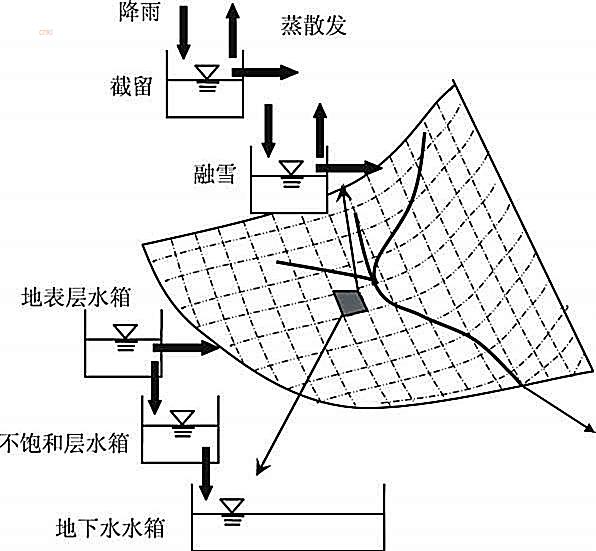The main physical processes of PDTank model include rainfall, runoff, evapotranspiration, infiltration, snow melting, underground runoff, surface runoff and river flow calculation. Correspondingly, the model calculation program includes snow and snow melting module, evapotranspiration module, surface runoff module, soil flow module, underground runoff module and river runoff calculation module.
The basic unit of PDTank model is a water storage tank. A simple water tank model is a group of water tanks in vertical series. There are outlet holes beside each water tank and infiltration holes at the bottom. There is a water storage depth. Generally, there is only one side hole in the lowest water tank, and there is no infiltration hole and water storage depth, In addition, if the sum of the original storage depth of the water tank is greater than the height of the outlet hole, there will be outflow. At the same time, another part of the water will enter the second layer of water tank from the infiltration hole, and then depending on the water storage depth and outlet hole height of the layer, the outflow will be determined, and so on.
PDTank model is a comprehensive hydrodynamic model, Based on the terrain represented by digital elevation information, the model includes vegetation canopy module to simulate evapotranspiration, energy balance module to simulate snow melting, surface module to simulate slope flow, underground unsaturated layer module to simulate vegetation root zone, groundwater module to simulate confined and unconfined groundwater, channel module to simulate open channel flow, etc Land use, soil properties and geographical features are pre-defined in each digital elevation grid. In each calculation step, for each grid on the watershed, the model establishes simultaneous energy and water balance equations. The overall structure of the model is based on a series of storage tanks.
[1]徐宗学,罗睿.PDTank模型及其在三川河流域的应用[J].北京师范大学学报(自然科学版),2010,46(03):337-343.










